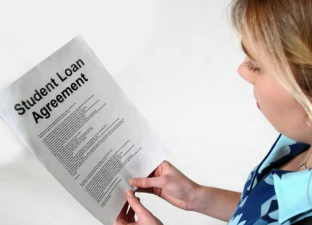In the United States in 2024, the student loan problem remains a focus of social attention. Over the past few decades, the scale of student loans has continued to expand, the burden is heavy, and the impact is far-reaching. Although the government has introduced a series of relief policies in recent years, there are still many challenges in fundamentally solving the student loan problem. This article will explore the current status of student loans in the United States, analyze the government's response measures and their effects, and look forward to possible future development trends.

In the United States in 2024, the student loan problem remains a focus of social attention. Over the past few decades, the scale of student loans has continued to expand, the burden is heavy, and the impact is far-reaching. Although the government has introduced a series of relief policies in recent years, there are still many challenges in fundamentally solving the student loan problem. This article will explore the current status of student loans in the United States, analyze the government's response measures and their effects, and look forward to possible future development trends.
The current status of student loans: pressure and challenges
Continued growth in loan scale
According to the latest data, the total amount of student loans in the United States has reached approximately $1.57 trillion. Although it has decreased slightly from previous years, the overall scale is still huge. Compared with $240 billion in 2004, this figure has increased by more than 600%. This growth rate far exceeds the increase in auto loans and credit card debts, showing the heavy pressure that student loans put on American families.
The prevalence and severity of the burden
As of 2024, approximately 40 million borrowers in the United States are burdened with student loan debt. The average loan amount per person has reached $38,000, a figure that has been rising over the past decade. More worryingly, many borrowers do not repay enough to cover the interest, which has led to an increase in debt rather than a reduction. High delinquency rates are also a serious problem. The delinquency rate of student loans has been higher than that of credit card loans in recent years. Although the government has eased the repayment suspension policy during the epidemic, the problem remains serious.

Aging loan phenomenon
The age structure of student loans is also changing, with the proportion of borrowers aged 50 and above increasing. Many borrowers are still burdened with student loans at retirement age, which has a long-term negative impact on their financial situation and quality of life. This phenomenon not only increases the financial burden on society, but also makes it difficult for many people to realize their post-retirement life plans.
Government relief policies: measures and effects
Content of current relief policies
In recent years, the US government has introduced a series of student loan relief policies to reduce the burden on borrowers. For example, the relief program launched in 2022 provides a one-time debt relief of up to $20,000 for borrowers with an annual income of less than $125,000. In addition, attempts have been made to reduce the financial pressure on students through measures such as the Public Service Loan Forgiveness (PSLF) program and the forgiveness of fraudulent school debt.
Evaluation of policy effectiveness
These relief policies have indeed achieved certain results in the short term. It is reported that the Biden administration has forgiven nearly $48 billion in debt for more than 1.8 million borrowers, and these forgiveness have helped many borrowers accumulate savings, pay bills or apply for mortgages more easily. However, these policies also have limitations. The scale of the forgiveness is relatively limited and cannot fundamentally solve the entire student loan problem. Moreover, large-scale forgiveness plans have not yet been approved for full implementation due to legal issues.
Fiscal costs and controversies of policies
The fiscal cost of the forgiveness policy is also a matter of concern. Although these measures have alleviated the burden on borrowers to a certain extent, they have also led to huge fiscal expenditures. According to estimates, if all eligible borrowers can obtain forgiveness, the government may face fiscal expenditures of up to $400 billion. In addition, the implementation and effectiveness of the forgiveness plan also face legal and administrative challenges, which makes the long-term effect of the policy full of uncertainty.
Future Outlook: Changes and Possible Paths
Reform of the Education System
To fundamentally solve the student loan problem, it is not enough to rely on relief policies alone. The reform of the education system is the key path for the future. First of all, the cost of higher education needs to be controlled. Reducing tuition fees is a fundamental measure to reduce the burden of student loans. In addition, promoting more scholarships and grants programs and expanding opportunities for free education are also effective ways to reduce the demand for student loans.
Innovation of the Loan System
Another important direction is to innovate the student loan system. For example, income-driven repayment plans can adjust the repayment amount according to the borrower's income level, which can better adapt to the actual situation of the borrower. In addition, exploring innovative models such as flexible loan interest rates and interest-free loans may also become a future solution.
Technology and data-driven solutions
The development of technology also provides new possibilities for solving the student loan problem. Using big data analysis and artificial intelligence technology, borrowers' repayment ability can be more accurately assessed, and loan conditions and repayment plans can be optimized. Technology can also help simplify the loan management process and improve the efficiency of policy implementation.
Joint efforts of society and policies
Finally, solving the student loan problem requires joint efforts from all sectors of society. The government, educational institutions, financial institutions and the public need to participate together to promote the implementation and improvement of relevant policies. Only through multi-party cooperation can the effective solution of the student loan problem be truly achieved.
Solving the student loan problem in the United States is a complex and long-term process that requires comprehensive measures and sustained efforts. Although the government has introduced a series of relief policies and achieved certain results in the short term, there are still many challenges to fundamentally solving the problem. In the future, in addition to further improvement and innovation of policies, the reform of the education system and the promotion of technology are also needed. Only through the joint efforts of the whole society can a more equitable and sustainable higher education environment be created for future students.


